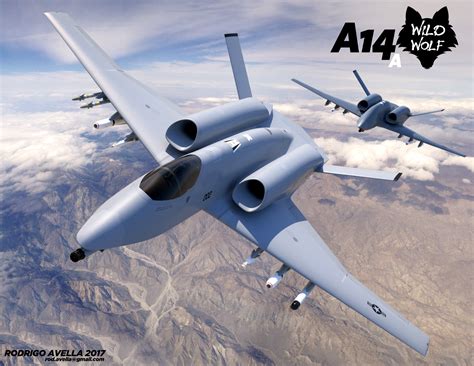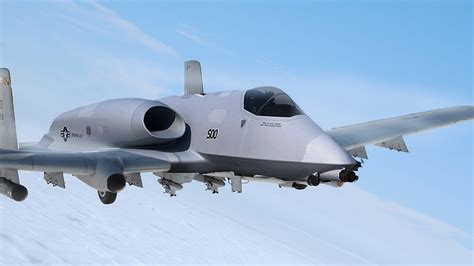A-10 Warthog Replacement Aircraft Options

The Need for a Replacement: Understanding the A-10 Warthog's Limitations

The A-10 Warthog, also known as the Thunderbolt II, has been a stalwart of the US Air Force’s ground-attack capabilities for decades. Its unique design and weaponry make it an ideal platform for close air support (CAS) and ground-attack missions. However, with the A-10’s average age approaching 40 years, the US Air Force has begun exploring options for a replacement aircraft.
The A-10’s limitations, such as its limited speed, maneuverability, and technological capabilities, have become increasingly apparent in modern combat scenarios. Moreover, the rise of advanced surface-to-air missile systems has made the A-10’s low-altitude, low-speed profile more vulnerable. As a result, the US Air Force is seeking a replacement that can not only perform the A-10’s core functions but also adapt to the evolving nature of modern warfare.
Key Requirements for the A-10's Replacement

The US Air Force has identified several key requirements for the A-10’s replacement, including:
- Survivability: The ability to operate in hostile environments with advanced surface-to-air missile systems
- Range and Endurance: Increased range and loiter time to support extended ground-attack operations
- Precision and Accuracy: Improved precision-guided munitions and targeting capabilities
- Situational Awareness: Enhanced sensor and communication systems for real-time battlefield awareness
- Modularity and Adaptability: The ability to integrate new technologies and payloads as they become available
Options for the A-10's Replacement

Several aircraft have been proposed or are being developed as potential replacements for the A-10 Warthog. Some of these options include:
- F-35A Lightning II: The F-35A is a multi-role fighter aircraft that has been touted as a potential replacement for the A-10. Its advanced sensors, networking capabilities, and precision-guided munitions make it an attractive option. However, its high cost and limited payload capacity have raised concerns.
- A-29 Super Tucano: The A-29 is a turboprop-powered attack aircraft that has been used by several countries for counterinsurgency and ground-attack operations. Its low operating costs, simplicity, and effectiveness have made it a popular choice for smaller air forces.
- OA-X: The OA-X (Observation and Attack, Experimental) is a US Air Force program aimed at developing a low-cost, off-the-shelf aircraft for ground-attack and observation missions. Several aircraft, including the Textron Aviation AT-6 Wolverine and the Sierra Nevada Corporation/Embraer A-29 Super Tucano, are competing for the OA-X contract.
- Next-Generation A-X: The US Air Force has also initiated a study for a next-generation A-X aircraft, which would be designed from scratch to meet the service’s future ground-attack requirements. This aircraft would likely incorporate advanced technologies such as unmanned systems, artificial intelligence, and hypersonic capabilities.
| Aircraft | Manufacturer | Key Features |
|---|---|---|
| F-35A Lightning II | Lockheed Martin | Multi-role fighter, advanced sensors, precision-guided munitions |
| A-29 Super Tucano | Embraer/Sierra Nevada Corporation | Turboprop-powered, low operating costs, simplicity |
| OA-X (AT-6 Wolverine) | Textron Aviation | Low-cost, off-the-shelf, turboprop-powered |
| Next-Generation A-X | TBD | Advanced technologies, unmanned systems, artificial intelligence, hypersonic capabilities |

💡 Note: The Next-Generation A-X program is still in its infancy, and no formal contracts or manufacturers have been announced.
Challenges and Considerations

Replacing the A-10 Warthog will not be a straightforward process. Several challenges and considerations must be addressed, including:
- Cost: Any replacement aircraft will need to be cost-effective, given the US Air Force’s limited budget and competing priorities.
- Technological advancements: The chosen replacement will need to incorporate advanced technologies to remain effective in modern combat scenarios.
- Operational requirements: The replacement aircraft must meet the US Air Force’s operational requirements for ground-attack and close air support missions.
- Transition and training: The transition to a new aircraft will require significant investment in training and infrastructure.
Conclusion

The A-10 Warthog’s replacement is a complex issue, with several options and considerations on the table. As the US Air Force moves forward with its plans, it will need to balance competing priorities, technological advancements, and operational requirements. Ultimately, the chosen replacement will need to provide a significant improvement over the A-10’s capabilities while meeting the evolving needs of modern warfare.
What are the key requirements for the A-10’s replacement?

+
The key requirements for the A-10’s replacement include survivability, range and endurance, precision and accuracy, situational awareness, and modularity and adaptability.
What are some potential replacement aircraft for the A-10?

+
Some potential replacement aircraft for the A-10 include the F-35A Lightning II, A-29 Super Tucano, OA-X, and Next-Generation A-X.
What are some challenges and considerations for replacing the A-10?

+
Some challenges and considerations for replacing the A-10 include cost, technological advancements, operational requirements, and transition and training.
Related Terms:
- a 10 warthog gun
- a 10 warthog replacement crop duster
- super a 10 warthog
- a 10 warthog upgrade
- a 10c
- F35 vs A 10